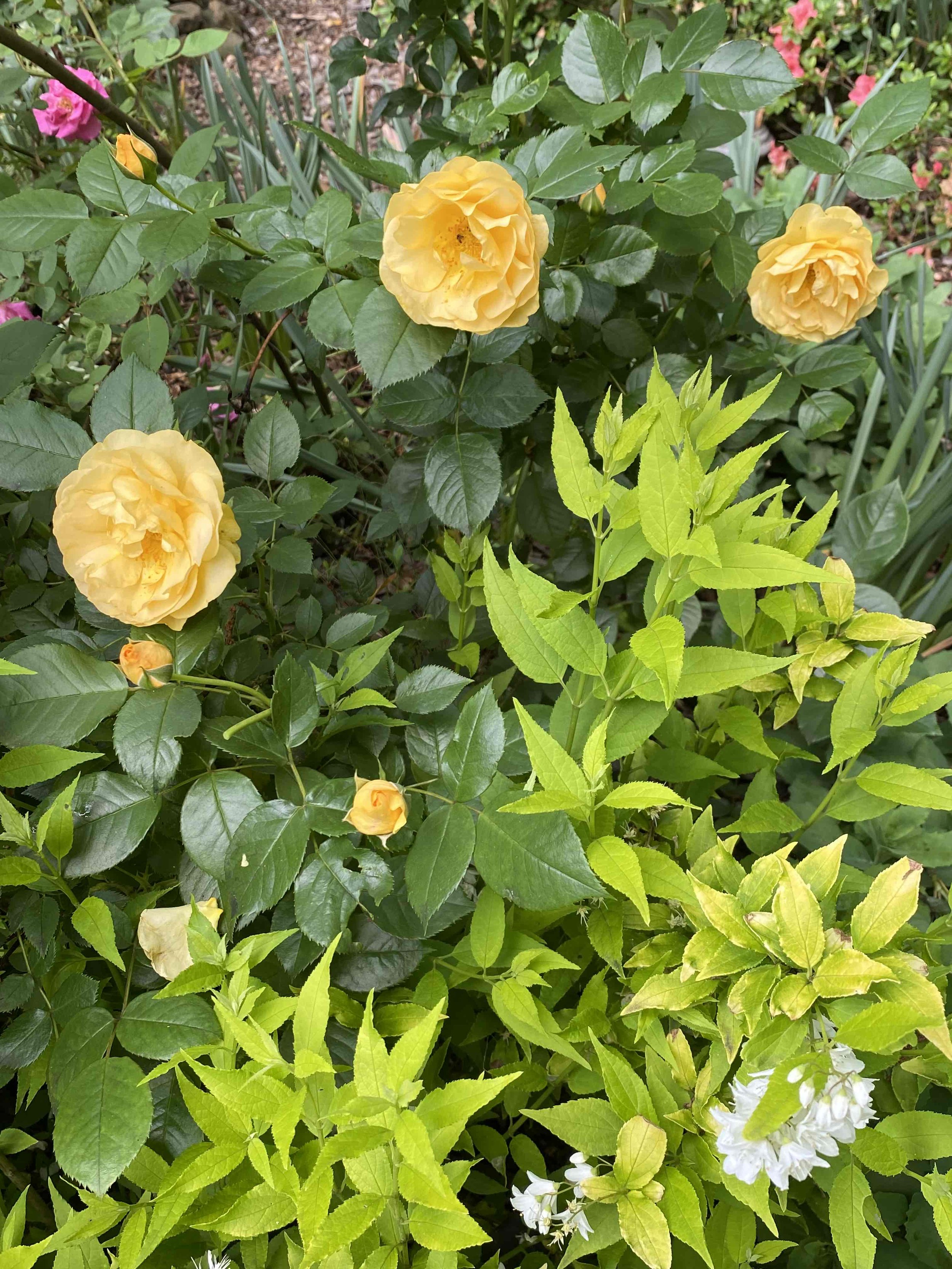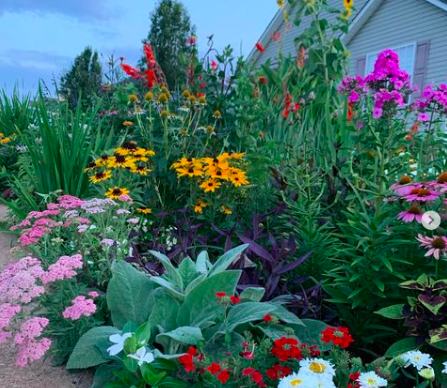Plant of the Week: The Rose
I think this is Graham Thomas come again down in Virginia. No black spot yet! He is sticking to the schedule well and leaning on a Deutzia ‘Chardonnay Pearls’.
So far away! My roses live out in the ‘burbs.
Too big a topic, right? I could have narrowed it down to climbing roses, shrub roses, hybrid tea roses, floribundas, grandiflora, heirloom, musk, dwarf, noisette, David Austin, ramblers… I think you get the idea.
But if you grow roses in your garden, I wonder how much you are able to enjoy them just as plants? I am hopeful that their amazing blooms and scent make up for any annoying tedium of having to work to make them look good, but let me let you in on a little secret…
I spend about as much time and energy on my roses as I do on my peonies, which is to say, not much at all.
Getting closer.
Back when I started gardening here I made a good decision: with a few exceptions, I planted all of my roses (I probably grew 20 up in CT, but only have about a dozen or so here, in a much larger garden) in one neighborhood, far away from obvious view.
The spot has good sun except for right about the June Equinox when the sun is so high that there are tree branches giving a bit of midday shade. The roses grow in company: sedums, peonies and several blueberry bushes are their neighbors. They all are on the following strict horticultural regimen
Feb or March: Quick prune of leggy growth and dead or crossing branches. Remember if you have to choose, older canes produce fewer flowers, so off with their heads (the older canes, silly. Roses rarely flower in winter :)
Early May: Flowers to cut or enjoy from a distance
Late May: Black spot begins
June: Japanese Beetles arrive
July and August: Roses are taciturn, having been savaged by beetles
September and October: Having gotten through bugs, black spot and very humid dog days, roses bloom again.
What do I do about the black spot and beetles? Nothing.
And that is the advantage of growing them far away.
Guest:
Janice Groves of Jay’s Garden Journal
Did you know that cardboard is an excellent gardening tool? I actually use it to seal off the adventitious roots of nearby trees from their unwelcome invasion into the bottom of my various compost piles. Smart roots, going for the good stuff, but I want my black gold for me.
Janice Groves uses it to create new garden beds, and Janice Groves has been creating a LOT Of new garden beds.
She began her gardening journey in earnest when her daughter went off to college. So healthy, that adjustment. As I recall, mine was to incorporate weeknight drinking into my schedule when our youngest went off to college. Fun, but not nearly as healthy.
Janice gardens in a development in Rock Hill, South Carolina and it is not, shall we say rife, with like minded plant people. She garners attention, almost all positive, with her horticultural ways and she only has to explain a few things to a few people as they pass by and look at her unusually verdant patch.
Sheet mulching is one… and I wish I had remembered to do it when I extended a bed last fall. I went for instant gratification and removed the turf grass by hand and planted perennial divisions and a tree immediately.
Had I been a patient gardener I would have covered up the turf with cardboard and wood chips last fall. The turf would have been smothered naturally and the cardboard would have started to decompose and feed the soil. I would have been able to plant this spring.
I wish I had known Jay last fall!
If a picture is worth a thousand words, and a video is priceless, Go here to see how it is done.
Jay and some magnificent Elephant Ear foliage
Sheet mulching— this is how we make a bed
One of Jay’s beautiful borders
Coffee Time!
Please consider supporting Into the Garden with Leslie my buying me a cup of coffee
OR! Becoming a member of I’m into the Garden too!
I will send you some LH Gardens gear if you become a member!
Garden Questions, Answered
(or at least opined upon)
Can gardening decrease your blood pressure?
When is the best time to cut back liriope?
When can you remove daffodil foliage?
What’s a strimmer?
Can gardening decrease your blood pressure?
There are so many sources that say, with authority, that it does. But since everything sounds better with a British accent, and since I will be off in Jolly old England affecting one as you read this, I thought I would cite this particular study by the Royal College of Physicians.
Says the article: Several trials have revealed the beneficial effects on mood and mental health of simply observing nature, or even images of natural scenes. In a Japanese study, viewing plants altered EEG recordings and reduced stress, fear, anger and sadness, as well as reducing blood pressure, pulse rate and muscle tension.
The article goes on to state that sunlight lowers blood pressure, but it also cites a study that showed that simply putting plants in an indoor work space did it also.
When is the best time to cut back liriope?
Easier to have removed the old before you have the mix of old and new.
Short answer: winter. But winter is when we would rather have as much green in our gardens as possible. Still, knowing that last year’s liriope foliage will soon begin to look like, well, last year’s liriope foliage, should inspire you to just git ‘er dun in winter. In spring, when the new liriope growth and the new growth of other surrounding plants will be in your way of easily removing the tatty bits, you’ll have wished you had done it in winter.
I recommend using a string trimmer to do this job. Those liriope leaves are quite fibrous and using secateurs is time consuming.
When can you remove daffodil foliage?
Not yet, but I did finger comb these to get going in one direction. Still, it’s shaggier than a boy band (get it? One Direction?). When I take it away there will be quite a lacuna. I have some Snow on the Mountain (Euphorbia marginata) seeds tucked in. Recommended by Peggy Cornett.
When it’s brown, not collecting chlorophyll, not photosynthesizing, and no longer feeding the bulb. Such a drag to wait, I know, but try to be patient.
What’s a strimmer?
This is a strimmer. Just faster than saying string trimmer. And this is EXACTLY the one I use.














